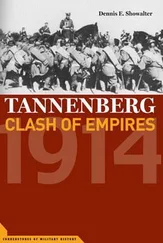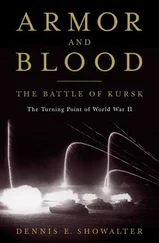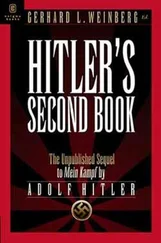In those contexts it is easy to overlook the salient fact that the German army was quick and effective in developing antitank techniques. This was facilitated by the moonscape terrain of the Western Front, the mechanical unreliability of early armored vehicles, and such technical grotesqueries as the French seeking to increase the range of their early tanks by installing extra fuel tanks on their roofs, which virtually guaranteed the prompt incineration of the crew unless they were quick to abandon the vehicle. Even at Flers the Germans had taken on tanks like any other targets: aiming for openings in the armor, throwing grenades, using field guns over open sights. German intelligence thoroughly interrogated one captured tanker and translated a diary lost by another. Inside of a week, Berlin had a general description of the new weapons, accompanied by a rough but reasonably accurate sketch.
One of the most effective antitank measures was natural. Tanks drew fire from everywhere, fire sufficiently intense to strip away any infantry in their vicinity. A tank by itself was vulnerable. Therefore, the German tactic was to throw everything available at the tanks and keep calm if they kept coming. Proactive countermeasures began with inoculating the infantry against “tank fright” by using knocked-out vehicles to demonstrate their various vulnerabilities. An early frontline improvisation was the geballte Ladung: the heads of a half dozen stick grenades tied around a complete “potato-masher” and thrown into one of a tank’s many openings—or, more basic, the same half dozen grenades shoved into a sandbag and the fuse of one of them pulled. More effective and less immediately risky was the K-round. This was simply a bullet with a tungsten carbide core instead of the soft alloys commonly used in small arms rounds. Originally developed to punch holes in metal plates protecting enemy machine-gun and sniper positions, it was employed to even better effect by the ubiquitous German machine guns against the armor of the early tanks. K-rounds were less likely to disable the vehicle, mostly causing casualties and confusion among the crew, but the end effect was similar.
As improved armor limited the K-round’s effect, German designers came up with a 13mm version. Initially it was used in a specially designed single-shot rifle, the remote ancestor of today’s big-caliber sniper rifles but without any of their recoil-absorbing features. The weapon’s fierce recoil made it inaccurate and unpopular; even a strong user risked a broken collarbone or worse. More promising was the TuF (tank and antiaircraft) machine gun using the same round. None of the ten thousand TuFs originally projected were ready for service by November 11—but the concept and the bullet became the basis for John Browning’s .50-caliber machine gun, whose near-century of service makes it among the most long-lived modern weapons.
When something heavier was desirable, the German counterpart of the Stokes mortar was a much larger piece, mounted on wheels, capable of modification for direct fire and, with a ten-pound shell, lethal against any tank. The German army had also begun forming batteries of “infantry guns” even before the tanks appeared. These were usually mountain guns or modified field pieces of around three-inch caliber. Intended to support infantry attacks by direct fire, they could stop tank attacks just as well. From the beginning, ordinary field pieces with ordinary shells also proved able to knock out tanks at a range of two miles.
In an emergency the large number of 77mm field pieces mounted on trucks for antiaircraft work could become improvised antitank guns. These proved particularly useful at Cambrai in November 1917, when more than a hundred tanks were part of the spoils of the counterattack that wiped out most of the initial British gains. They did so well, indeed, that the crews had to be officially reminded that their primary duty was shooting down airplanes. As supplements, a number of ordinary field guns were mounted on trucks in the fashion of the portees used in a later war by the British in North Africa.
If survival was not sufficient incentive, rewards and honor were invoked. One Bavarian battery was awarded 500 marks for knocking out a tank near Flers. British reports and gossip praised an officer who, working a lone gun at Flesquieres during the Cambrai battle, either by himself or with a scratch crew, was supposed to have disabled anywhere from five to sixteen tanks before he was killed. The Nazis transformed the hero into a noncommissioned officer, and gave him a name and at least one statue. The legend’s less Homeric roots seem to have involved a half dozen tanks following each other over the crest of a small hill and being taken out one at a time by a German field battery. The story of “the gunner of Flesquieres” nevertheless indicates the enduring strength of the tank mystique in German military lore.
Other purpose-designed antitank weapons were ready to come on line when the war ended: short-barreled, low-velocity 37mm guns, an automatic 20mm cannon that the Swiss developed into the World War II Oerlikon. The effect of this new hardware on the projected large-scale use of a new generation of tanks in the various Allied plans for 1919 must remain speculative. What it highlights is the continued German commitment to tank defense even in the war’s final months.
That commitment is highlighted from a different perspective when considering the first German tank. It was not until October 1916 that the Prussian War Ministry summoned the first meeting of the A7V Committee. The group took its name from the sponsoring agency, the Seventh Section of the General War Department, and eventually bestowed it on the resulting vehicle. The members were mostly from the motor transport service rather than the combat arms, and their mission was technical: develop a tracked armored fighting vehicle in the shortest possible time. They depended heavily on designers and engineers loaned to the project by Germany’s major auto companies. Not surprisingly, when the first contracts for components were placed in November, no fewer than seven firms shared the pie.
A prototype was built in January; a working model was demonstrated to the General Staff in May. It is a clear front-runner for the title of “ugliest tank ever built” and a strong contender in the “most dysfunctional” category. The A7V was essentially a rectangular armored box roughly superimposed on a tractor chassis. It mounted a 57mm cannon in its front face and a half dozen machine guns around the hull. It weighed 33 tons, and required a crew of no fewer than eighteen men. Its under-slung tracks and low ground clearance left it almost no capacity to negotiate obstacles or cross broken terrain: the normal environment of the Western Front. An improved A7V and a lighter tank, resembling the British Whippet and based on the chassis of the Daimler automobile, were still in prototype states when the war ended. A projected 150-ton monster remained—fortunately—on the drawing boards.
Shortages of raw material and an increasingly dysfunctional war production organization restricted A7V production to fewer than three dozen. When finally constituted, the embryonic German armored force deployed no more than forty tanks at full strength, and more than half of those were British models salvaged and repaired. Material shortcomings were, however, the least of the problems facing Germany’s first tankers. By most accounts the Germans had the best of the first tank-versus-tank encounter at Villiers Bretonneaux on April 24, 1918. British tankers, at least, were impressed, with their commanding general describing the threat as “formidable” and warning that there was no guarantee the Germans would continue to use their tanks in small numbers.
In fact, the German army made no serious use of armor in either the spring offensive or the fighting retreat that began in August and continued until the armistice. In the ten or twelve times tanks appeared under German colors their numbers were too small—usually around five vehicles—to attract more than local attention. The crews, it is worth mentioning, were not the thrown-together body of men often described in British-oriented accounts. They did come from a number of arms and services, but all were volunteers—high-morale soldiers for a high- risk mission: a legacy that would endure. Europe’s most highly industrialized nation nevertheless fought for its survival with the least effective mechanized war instruments of the major combatants.
Читать дальше







![Traudl Junge - Hitler's Last Secretary - A Firsthand Account of Life with Hitler [aka Until the Final Hour]](/books/416681/traudl-junge-hitler-s-last-secretary-a-firsthand-thumb.webp)




